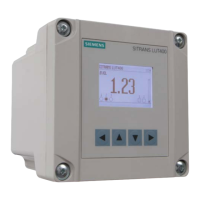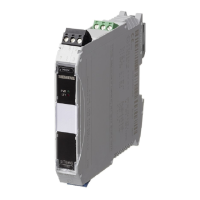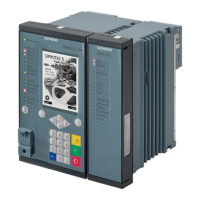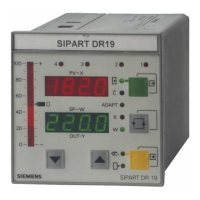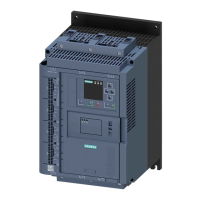Page 242 SITRANS LUT400 (HART) – OPERATING INSTRUCTIONS A5E33329501
mmmmm
Troubleshooting
Noise Problems
Incorrect readings can be the result of noise problems, either acoustic or electrical, in the
application.
The noise present at the input to the ultrasonic receiver can be determined by viewing the
echo profile locally via the LUI, or alternatively, using remote software such as SIMATIC
PDM, AMS Device Manager, FC375/475, or DTM. View also parameters
3.2.9.4. Noise
Average
and
3.2.9.5. Noise Peak
. In general, the most useful value is the average noise.
With no transducer attached the noise is under 5 dB. This is often called the noise floor. If
the value with a transducer attached is greater than 5 dB, signal processing problems
can occur. High noise decreases the maximum distance that can be measured. The exact
relationship between noise and maximum distance is dependent on the transducer type
and the material being measured. An average noise level greater than 30 dB may be
cause for concern if the installed transducers maximum operation range matches the
range of the application (e.g. 8 m application using an 8 m XRS-5). Using a larger
transducer with greater transmitted energy should help to improve performance in a
noise condition.
Determine the Noise Source
Disconnect the transducer from the SITRANS LUT400. If the measured noise is below
5 dB, then continue here. If the measured noise is above 5 dB go to
Non-Transducer
Noise Sources
below.
1. Connect only the shield wire of the transducer to the SITRANS LUT400. If the
measured noise is below 5 dB, continue with the next step. If the noise is above 5
dB, go to
Common Wiring Problems
below.
2. Connect the white and black transducer wires to the SITRANS LUT400. Record the
average noise.
3. Remove the positive wire of the transducer. Record the average noise.
4. Re-connect the positive wire and remove the negative wire. Record the average
noise.
Using the table below, determine the appropriate next step. The terms higher, lower and
unchanged refer to the noise recorded in the previous steps.
These are guidelines only. If the suggested solution does not solve the problem, try the
other options also.
- removed + removed Go to:
noise
higher higher
Reducing Electrical Noise
unchanged
Common Wiring Problems
lower
Reducing Acoustical Noise
unchanged higher
Reducing Electrical Noise
unchanged Contact Siemens representative.
lower
Reducing Acoustical Noise
lower higher
Common Wiring Problems
unchanged
Common Wiring Problems
lower
Reducing Acoustical Noise
